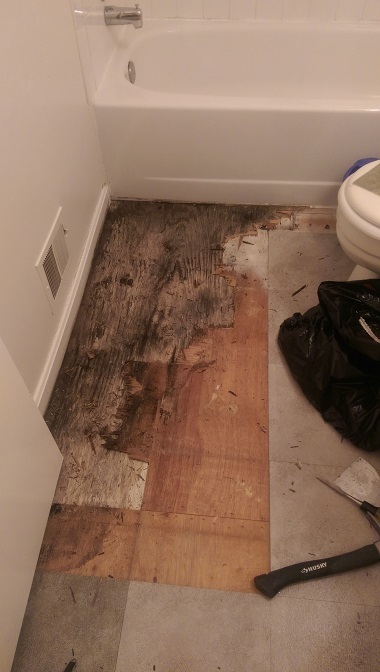Looking for Signs of Water Damage in the Bathroom
Looking for Signs of Water Damage in the Bathroom
Blog Article
The article author is making several good points relating to Common Causes of Water Damage in a Bathroom overall in the article following next.

The washroom is extremely susceptible for damp buildup and also potential water damage because of the constant use water in it. This article offers easy assessment strategies to aid detecting water damage risks.
The regular use water in the shower room makes it very prone for wet buildup and also possible water damage. By inspecting it regularly, you can reduce water related damages.
The following set of evaluations is easy to perform and should be done once in every three months in order to keep your bathroom in good shape and to prevent potential water problems triggered by the tub, the shower, pipe joints as well as plumbing, sinks, cabinets, and the toilet
Do not neglect executing these examinations as well as be complete while doing them. Bear in mind that these easy evaluations can save you a great deal of cash by supplying very early indicators for water damage
Sinks and Cabinets
Sinks and also closets are exposed to moisture and also moisture everyday and are often forgotten. Check routinely under the sink and on the kitchen counter over it. Repair any drip in the catch as it might suggest drain troubles. Browse the sink, sluggish draining pipes might suggest a blocked drainpipe. Change sink seals if they are broken or loosened.
Bathtub and also Shower
The shower as well as tub require unique attention as well as maintenance. Examine the ceramic tiles and change if split. Make sure that there is no missing out on grout between the floor tiles. Examine and change broken caulking at joints where the wall surfaces satisfy the floor or the tub. Clogged drains pipes as well as pipelines issues will stop the bathtub from drying out as well as might suggest serious issues beneath the bath tub. Speak with a specialist right away to prevent architectural damages. Focus on discolorations or soft locations around the bathtub walls as they might suggest an inner leak.
Plumbing
Signs for water damages are hard to identify because the majority of pipes are mounted inside the walls.
Pay unique focus to flooring and also walls wetness and spots as they might indicate an undetectable plumbing problem. Inspect dampness levels in adjacent areas as well.
The Commode
The toilet is a susceptible water joint. Check the water lines as well as look for leaks around the bathroom seat, in the tube, and under the water storage tank. If you identify any indications of dampness on the floor around the bathroom, look for leakages in the toilet rim as well as container seals.
Be aware that hanging toilet dish antiperspirants increases the possibilities for blockages.
Water Damage Signs In The Bathroom To Avoid Cleanup
Musty smell
This is one of the easiest signs to catch because musty smells are so odorous. The damp, earthy, moldy smell should be a big red flag. The smell will develop when moisture gets trapped in surfaces, and begins to facilitate mold growth. Leaking pipes under cabinets, inside walls, and behind shower fixtures will cause moisture to stay trapped and not dry, which will lead to mold growth and spread. As soon as you notice any musty smells in your bathroom, have it checked for hidden water damage and cleanup signs.
Visible mold
If the smell isn’t there to give it away, sometimes you will actually see mold growth. Finding mold in your bathroom is a serious problem, because mold is very harmful to your health. By the time mold growth is visible, it also means that water damage has already occurred and been present for some time. The only way the mold problem can be resolved is to find the source of the moisture and get it stopped. To safely and adequately remove mold, you need to have professionals handle the remediation. Do not waste any time in getting mold problems addressed, fixed, and sanitized so that you can protect you and your family from the many respiratory symptoms caused by mold exposure.
Damaged floors
Bathroom floors should be able to withstand some exposure to water while still remaining in good condition. However, when excess exposure or water leaks occur, they will begin to damage even the most water-resistant flooring. If you notice any cracking, bubbling, staining, or warping on your bathroom floors, there is probably a water leak somewhere causing the distortion. If you notice areas of the floor have become softer, or even have a spongy feeling, there is probably damage to the subfloor. Subflooring is typically made up of plywood. When plywood is exposed to water or moisture, it will absorb it. Once it has become saturated, the weight of the excess water will cause the wood to swell and soften. Check the floors in your bathroom frequently to catch any of these sings before they lead to damaged subflooring.
Changes on walls
When water leaks behind walls, it will cause changes in the drywall. Peeling plaster, blistering paint, and soggy wallpaper are all good indicators that excess water is building up behind the wall. Water leaking behind drywall will cause it to swell and be soft to the tough. If you start to notice gaps along the trim of your walls, or where tile meets the wall, it could also be a strong indicator that there is a leak behind the wall. Any changes, distortion, or damage on the walls should be evaluated as soon as you notice it to prevent further water damage and cleanup.

As an enthusiastic person who reads on How to Prevent Bathroom Water Damage, I thought sharing that excerpt was a good idea. Sharing is nice. Helping others is fun. Thanks for your time. Kindly stop by our website back soon.
Request Service Report this page